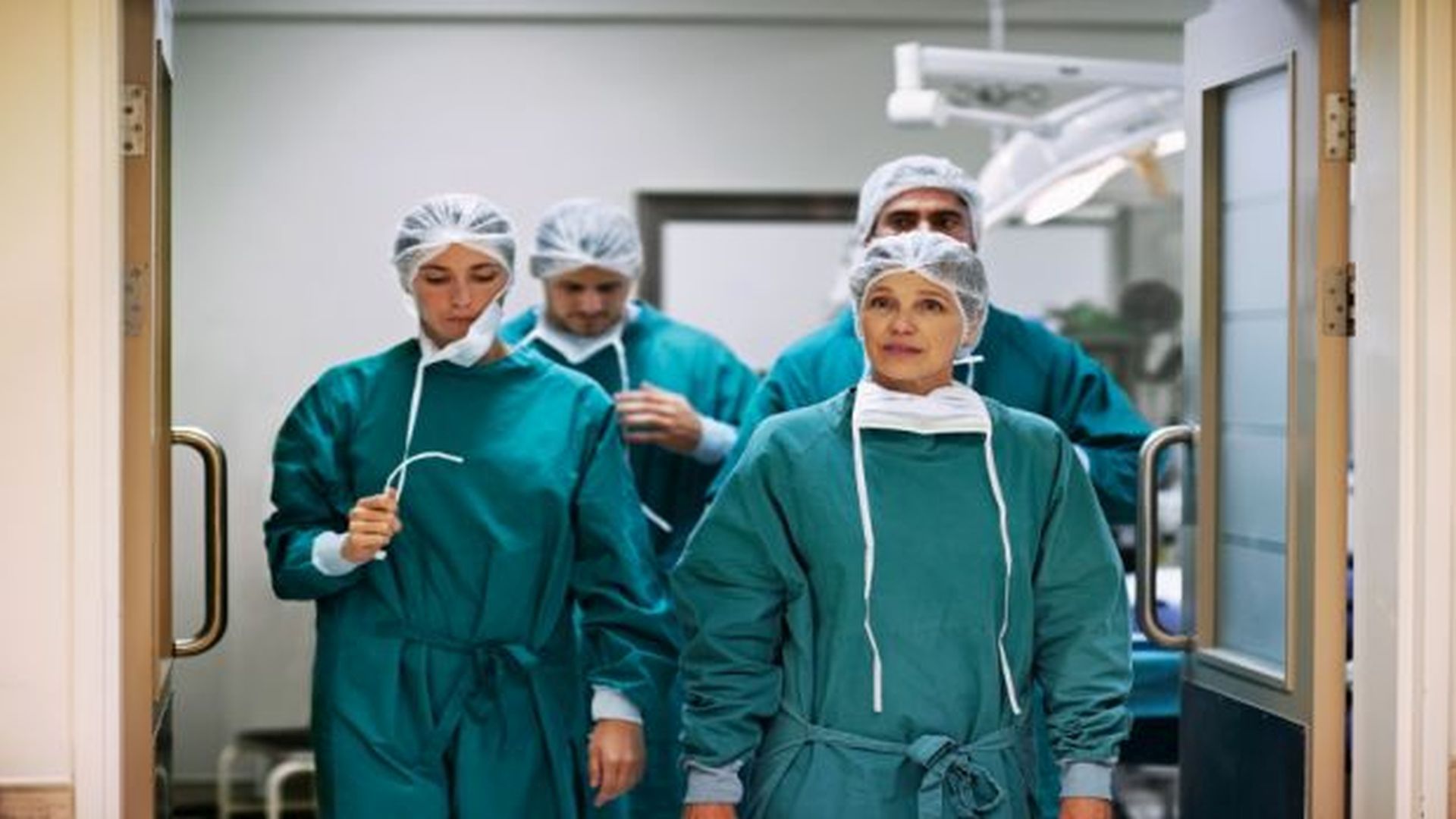Study Asserts That Separating Septic and Aseptic Operating Areas is Unnecessary

In Germany, the rule still applies that aseptic and septic and procedure rooms need to be separate; this is a requirement imposed by the Accident Insurance Provider for Hospitals. This means that a surgical procedure involving infected tissue has to be undertaken in an operating room with its own instruments, clothing, and laundry, which are separated from the aseptic operating room. Julian Camill Harnoss and coauthors show that this separation is unnecessary, in the current issue of Deutsches Ärzteblatt International.
The authors used a prospective comparative observational study design in order to investigate the microbial concentration of the environmental air and microbial sedimentation in 16 septic and 14 aseptic operations in general and visceral surgery (the same operating room). For each operation, the kind and duration of the procedure and the number of persons present were documented. The operating room did not have any ventilation system that could have affected the measurement results.
The range of surgeries comprised:
- 11 aseptic hepatic, pancreatic, and intestinal procedures.
- 3 open inguinal hernias.
- 6 septic procedures for perforations, ileus, and gallbladder empyema.
- 5 jet lavages for massive skin and soft tissue infections.
- 3 laparotomies for anastomotic failure, with and without abscesses.
- 2 procedures on infected fistulae in Crohn's disease.
As far as the microbial concentration in the environmental air in the room was concerned, no relevant differences were seen between septic and aseptic procedures. This was also the case for microbial sedimentation on the floor and on the walls of the operating room. The authors therefore did not see any compelling reason to separate out septic and aseptic procedures into different locations -- in spite of the lack of a ventilation system -- as long as basic hygiene measures are implemented, no one enters the operating room before the time period declared necessary for surface disinfection to take effect, and the switchover time between the two procedures (>30 minutes) is adhered to. The authors conclude that without such strict separation, hospitals are able to plan more flexibly and according to urgency of the operation.
In an accompanying editorial, Peter Bischoff and Petra Gastmeier of the institute for hygiene and environmental medicine [Institut für Hygiene und Umweltmedizin], Charité--Universitätsmedizin Berlin, take a clear position: "After almost 40 years of ongoing discussion, it is time to abandon completely the requirement for septic and aseptic surgical areas to be separated and thus make it possible to act more flexibly and cost-efficiently in everyday surgical practice. Routinely cleaning and disinfecting surfaces and devices after each procedure and implementing confirmed evidence-based measures minimizes the risk of postoperative wound infection in surgical patients."
References:
Harnoss JC, Assadian O, Diener MK, Müller T, Baguhl R, Dettenkofer M, Scheerer L, Kohlmann T, Heidecke CD, Gessner S, Büchler MW, Kramer A: Microbial load in septic and aseptic procedure rooms--results from a prospective, comparative observational study. Dtsch Arztebl Int 2017; 114: 465-72.
Bischoff P, Gastmeier P: The separation of septic and aseptic surgical areas is obsolete. Dtsch Arztebl Int 2017; 114: 463-4.
Together We Rise: Why AORN Expo 2025 Is a Must for Every Perioperative Nurse
March 31st 2025From April 5 to 8, 2025, thousands of perioperative nurses will gather in Boston for the 2025 AORN Global Surgical Conference & Expo—a transformational experience designed to elevate nursing practice, build lifelong connections, and advance surgical care.
The Guardians of Animal Health: Who Are Veterinary Infection Preventionists?
March 21st 2025Veterinary infection control experts Leslie Kollmann, BS, AAS, CVT, CIC, Denise Waiting, LVT, and Leslie Landis, LVT, BS, discuss challenges, zoonotic disease risks, and the importance of education, collaboration, and resource development in animal care facilities.